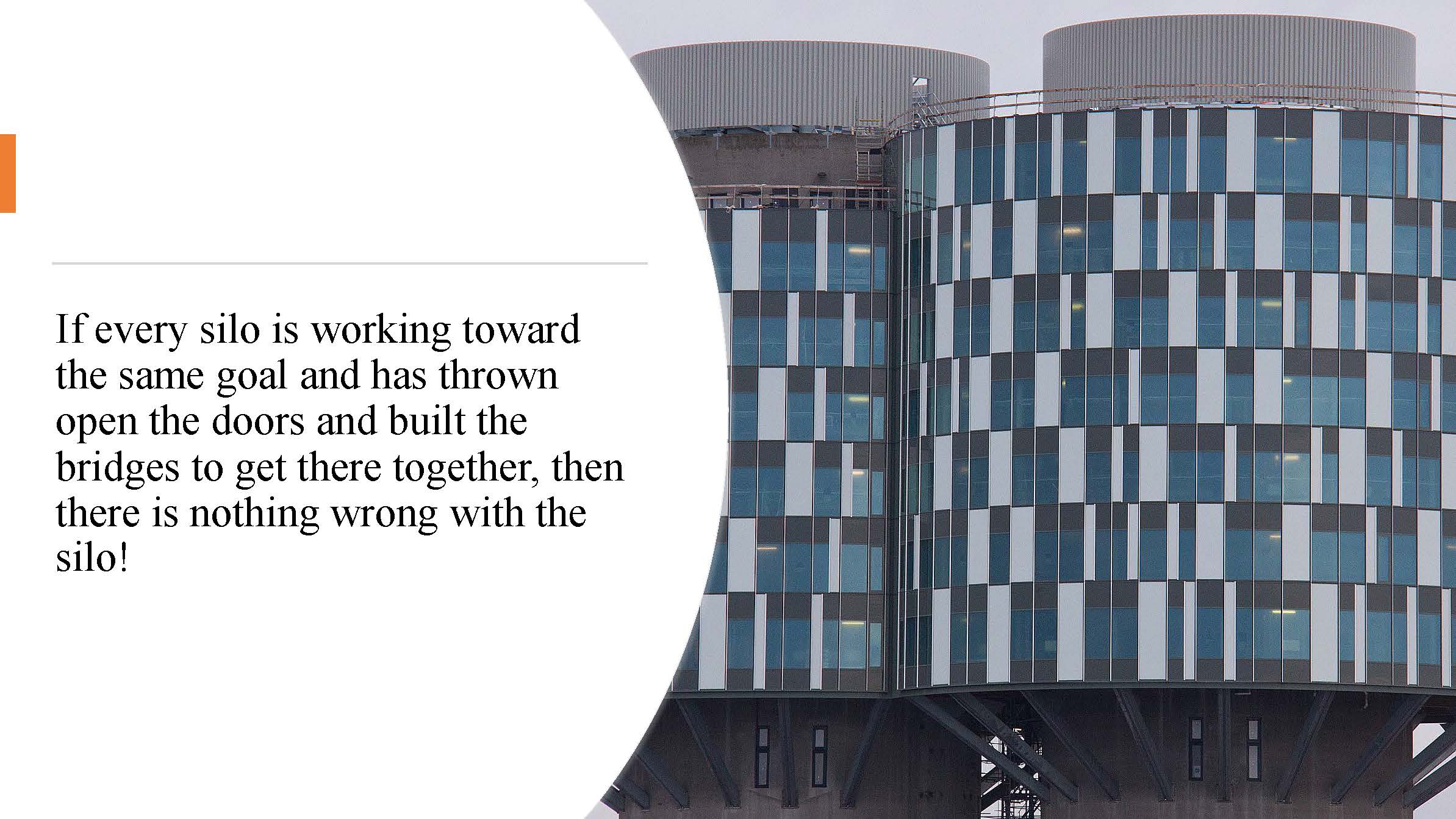MODERATOR:
Jennifer A Regala
Director of Publications/Executive Editor
American Urological Association
Linthicum, Maryland
@JenniferARegala
SPEAKERS:
Angela D Cochran
VP, Publishing
American Society of Clinical Oncology
Alexandria, Virginia
@acochran12733
Erin Landis
Managing Director
Origin Editorial
Washington, DC
@Erin_Landis77
Jennifer A Regala
REPORTER:
Becky Fargen
Journal Manager
Elsevier
Over time, organizations like professional societies can develop “silos” where departments start to function independently with little or no interaction or collaboration with each other. Since these silos can lead to ineffective results or departments working at cross purposes to each other, there is a tendency to approach organizational silos as structures that need to be dismantled completely. However, as presented by Angela Cochran and her fellow speakers in this session, expanding on her blog post in SSP’s The Scholarly Kitchen, “Don’t Bust Silos When a Little Remodeling Will Do,”1 it can be more constructive for departments to invite collaboration and learning.
To start, using metaphors of remodeling, Cochran gave some tips for improving organizational silos into being more welcoming and productive. Next, Erin Landis (previously of the American Gastroenterological Association [AGA]) expanded on this by giving specific examples of each of Chochran’s steps. Finally, Jennifer Regala gave further examples and tips for departments working together toward a common goal.
As Cochran pointed out at the beginning of the session, each department has its own experts with specific skill sets, so there is no need to break down silos completely. Instead, she recommends a little remodeling.
Step 1. Add Windows
Explain what you do and learn what other departments do. Haven’t we all said at one point or another, “What do they do over there? They can’t be that busy!” Landis gave the example of having 15-minute all-staff meetings with departmental reports so everyone could learn what was going on in other departments. This allowed staff to connect the dots, identify areas for collaboration, and spot problems that needed attention.
Step 2. Add Doors
Invite people from other departments, show off your expertise, and invite others to your department’s meetings. For example, as Landis discussed, hosting brown-bag lunches and informational sessions can help build connections, understanding and appreciation of work, and confidence across departments.
Step 3. Build Bridges
Build two-way communication, collaboration, and trust-building. The AGA Clinician’s Companion was Landis’s example for this one. To ensure the success of this quarterly, digital digest of the top clinical research from the AGA’s journals, cross-departmental collaboration, communication, and coordination were critical. The project team used Microsoft Teams to manage the project, which resulted in a well-thought-out new product, hands-on knowledge of other departments, and lessons learned about cross-divisional projects.
Bonus Step. Heavy Construction
Foster social interaction, share goals, identify common issues. This is an ongoing process. Here Landis talked about AGA’s Project Alpha, an organization-wide initiative that involved all departments. Project Alpha led to the AGA staff having a shared goal, which resulted in new connections and opportunities to show off their particular expertise. As a result, new leadership opportunities were formed, giving staff the chance to use skills they might not normally get to use.
To summarize, Regala said that “change starts at the top and must be embraced by all”—coworkers need to get to know one another and each other’s roles in order to effectively work together toward a common goal. Looking for opportunity, allies, and connections is key. Regala gave an example of The Journal of Urology, the AUA’s flagship journal. Several departments (Guidelines, Update Series, Membership, Marketing, Communications, Office of Education, and Office of Research) worked together toward the common goal of continuing to promote the journal.
Other examples of departments working together on common goals include the AUA’s first-ever publications booth at the annual conference, indexing and marketing Urology Practice, and launching a new open access journal, JU Open Plus. Learning from the past and moving into the future was highlighted at the end of Regala’s segment, as we extend bridge building to the scholarly publishing community.
In a brief group discussion at the end, the speakers touched on the importance of education and explaining, learning from the past and moving toward the future, and having a sense of community. The result of this metaphorical remodeled silo is very cool-looking, indeed!
References and Links

